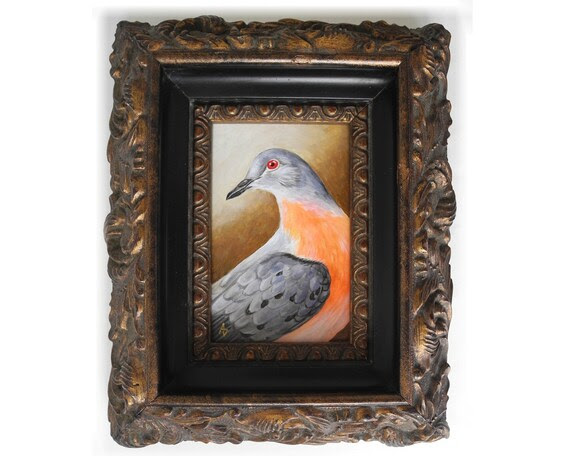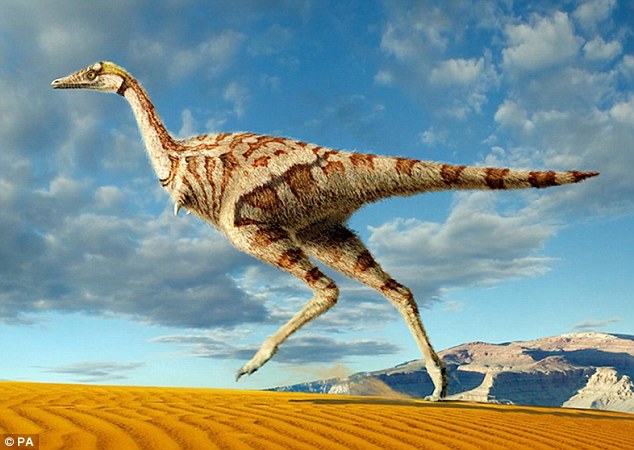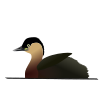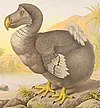Asiatic Lion Also known as the Indian or Persian lion (Panthera leo persica), this subspecies of the lion is one of the most impressive endangered animals of India. The Asiatic lion is different from the African lion on account of its larger tail tuft and less well developed mane. In India, Asiatic lions can be spotted at Gujarat's Gir National Park.
Snow Leopard
The snow leopard (
Panthera uncia) is is a massive cat living in the
mountain ranges of South and Central Asia and is one of the most endangered native animals in the Himalayas. With long, thick hairy fur, the snow leopard is basically anywhere from smoked gray to yellow tan in coloring. Its name comes from the white coloring of its belly. It is carnivorous and one of
the most solitary animals in the world.
This endangered big cat is found mostly in the Indian states of Jammu and Kashmir and Himachal Pradesh. It can be spotted at the following national parks in India:
- Hemis: Ladakh
- Nanda Devi: Uttarakhand
- Dibang: Arunachal Pradesh
- Kibber: Lahaul Spiti
- Pin Valley: Himachal Pradesh
- Great Himalayan: Kullu, Himachal Pradesh.
Blackbuck
The blackbuck (
Antilope cervicapra) is an
ungulate species of antelope found in India. It is
an herbivorous ruminant animal. This beautiful Indian antelope is near threatened as it is targeted on account of its skin and meat. Some of the main threats for the blackbuck are:
- Poachers
- Predators
- Habitat degradation
- Overgrazing
- Inbreeding
Also known as Kala Hiran in Hindi, this beautiful and majestic antelope species is found in Rajasthan, Haryana, Punjab (where it is the state animal). Odisha, Andhra Pradesh and Tamil Nadu. This species can be spotted in the following national parks:
- Guindy: Tamil Nadu
- Rollapadu: Andhra Pradesh
- Chilka: Odisha
Western Red Panda
The Western or Indian red panda (Ailurus fulgens fulgens) is a subspecies of the red panda, red cat-bear or lesser panda. It is also referred to as "red fox".
Residing in deciduous and coniferous forests, the endangered Indian red panda lives in temperate climates, in bamboo and hollow trees. It is an arboreal mammal found in the Eastern Himalayas. The red panda is among the endangered animals of India on account of:
- Inbreeding
- Poaching
- Habitat loss
- Population fragmentation
This is one of the most photogenic mammals in India, and ir can be found in 20 protected areas including Sikkim, Arunachal Pradesh, and West Bengal. National parks where the Indian red panda can be found include:
- Simlipal
- Khangchendzonga
- Namdapha
Other places include Nepal, Myanmar, and Bhutan. With a thick body and russet fur, the red panda is a truly unique creature that must be protected.
Indian Rhinoceros
The greater one-horned or Indian rhinoceros (Rhinoceros unicornis) is found in Assam, India. This endangered animal is a very large mammal, and it is the target of hunters who sell its horns at a high value. It has become a vulnerable species.
The Indian rhinoceros has
a single black horn that is present in both sexes of the species. Rhinoceros are very big; in fact, this species is the largest land mammal of Asia only behind
the Asian elephant.
Today, close to 3,000 Indian rhinos are found living in the wild, in their natural habitats. 2,000 of these are in:
Both are national parks in Assam. Other areas where this endangered animal of India can be found include the Dudhwa Tiger Reserve and the Pobitora Wildlife Sanctuary.
Nilgiri Tahr
The Nilgiri tahr or ibex (Nilgiritragus hylocrius) is an ungulate stocky goat endemic to the Nilgiri Hills of South India. With coarse short fur and a bristly mane, this endangered Indian goat can be found in:
- Eravikulam National Park: Nilgiri and Anamalai Hills
- Periyar National Park: Palni Hills
Nilgiri Langur
The Nilgiri langur (Trachypithecus johnii) is a monkey of the lutung type found in the Nigiri Hills, just like the Nilgiri tahr. The range of the Nilgiri langure includes:
- Kodagu (Karnataka)
- Palani Hills (Tamil Nadu)
- Kerala
This is one of the thirteen species of monkeys in India, vulnerable because its fur and meat are valued and it is the target of hunters. Deforestation is another threat for this monkey. Its cousin, Gee's golden langur, is also an endangered animal of India.
Kashmir Stag
The hangul or Kashmir stag (Cervus canadensis hanglu) is an endangered animal. This kind of elk is recognizable because it has a light rump patch, without the tail. Antlers of the Kashmir stag constitute 5 tines.
The graceful hangul can be found in:
- Dachugam National Park
- Rajparian Wildlife Sanctuary
- Overa Aru
- Sind Valley
- Kishtwar and Bhaderwah forests
Found in the hilly state of Jammu and Kashmir, the hangul is targeted for its skin and flesh as well as its horns.
Lion-tailed Macaque
The lion-tailed macaque or wanderoo (Macaca silenus) is an Old World monkey that inhabits the same region as the Nilgiri tahr and langur, the Western Ghats. It has a silver-white mane from the cheeks to the chin.
Found in Kerala's Silent Valley National Park, Papanasam in Kallakad, Mundanthurai Tiger Reserve in Tamil Nadu and Karnataka's Siri Honnavara rainforests, the lion-tailed macaque is falling in numbers because of rising urbanization and habitat destruction.
Gaur
The Gaur or Indian bison (Bos gaurus) is the largest extant bovine in the world. Found in Southern and Southeast Asia, the Indian bison is threatened by poaching for trade to supply global markets. It is currently a vulnerable species.
The gaur can be found in Arignar Anna Zoological Park in Tamil Nadu and Chinnar Wildlife Sanctuary in Kerala, two of India's southernmost coastal states.
Ganges River Dolphin
Scientifically called Platanista gangetica gangetica, the Ganges river dolphin is a subspecies of the endangered South Asian river dolphin. Therefore, it is a cetacean mammal.
Found in the Ganga-Brahmaputra-Meghna system and their tributaries in India, Ganges river dolphins are
targeted by water development projects, industrialization, and pollution and resultant habitat loss. Here you can learn more about
why is the South Asian river dolphin endangered.
Native to India, this
freshwater dolphin is also found in
Nepal and Bangladesh. Feeding on prey such as fish and shrimps which are dwindling in numbers, these species are blind by birth and cannot swim inside the water continuously, returning to the surface every 30 to 120 seconds.

Image: http://www.worldwildlife.org/species/ganges-river-dolphin
Gharial
The gharial, gavial or fish-eating crocodile (Gavialis gangeticus) is one of the three crocodilian species found in India. It is recognizable for its long and very thin snout, which in the case of male gharials has a pot-shaped boss at the tip.
The river Ganges is the habitat of the Indian gharial. This crocodile is also found in the Brahmaputra, Irrawady and Chambal rivers. The mass pollution in its habitat has led to the death of this species, which now is critically endangered.
Indian Vulture
The Indian vulture (Gyps indicus) is one of the largest flying birds in the Indian subcontinent. Like most vultures, it has a bald head, scavenges for food, moves in flocks and nests on trees and cliffs.
Indian vultures are another critically endangered species found in Uttar Pradesh, apart from Gujarat and Rajasthan. The Indian and the white-rumped vultures have suffered a devastating drop in population numbers because of accidental poisoning by a medical drug that was given to the cattle they scavenged on.
Indian Wild Ass
The Indian or Baluchi wild ass (Equus hemionus khur) can be found in Gujarat's Rann of Kutch and Ladakh in Sikkim. Their coat is sandy looking and varies from red to chestnut.
Phayre's Leaf Monkey
The Phayre's leaf monkey or Phayre's langur (Trachypithecus phayrei) is a dominant monkey with a look as if it is wearing a monocle. This beloved species is one of the endangered animals of India, although is also lives in countries like Bangladesh, China, Laos, Myanmar and Vietnam.
As the name points out, Phayre's leaf monkey can be found in semi-evergreen forests and areas dominated by bamboos. These monkeys live mostly on immature leaves and bamboo.
Four-horned antelope
The four-horned antelope or chousingha (Tetracerus quadricornis) has four permanent crown-like horns above the head. It is currently a vulnerable species.
The beautiful four-horned antelope is the smallest bovid in Asia, with a slender frame and thin legs. With the brown coat and white underparts, this animal is found in Tamil Nadu and Maharashtra. Plants and grass make up the chousingha's main food, and it is a solitary animal.
Indian Pangolin
The Indian or thick-tailed pangolin (Manis crassicaudata) is among the endangered animals in India. It has the distinction of having no teeth and bad eyesight.
With a
powerful set of claws and a horned, scaly body, the Indian Pangolin is found in Bandhavgarh National Park and Corbett, Gir. Feeding on insects and termites, the Indian Pangolin is endangered because of habitat loss and is
a victim of illegal animal trade.
Barasingha
The barasingha or swamp deer (Rucervus duvaucelii) has twelve tined, crown-like horns above its head and a thick brown coat that turns darker during the mating season.
Barasinghas are a vulnerable species. Herbivores by nature, they are found in Kanha National Park in central India. It is the state animal of Madhya Pradesh.
Asian Elephants
Asian or Asiatic elephants (Elephas maximus) are highly intelligent animals and one of the largest mammals in the world. Smaller in size than African elephants, Asian elephants are recognizable by their small ears and dark gray to brown coloring. Here you can learn the differences between African and Asian elephants.
With an average dietary intake of 150 kg in a day, Asian elephants eat mostly rice, sugarcane, and grass. The Asian elephant can now only be found in:
- Corbett Tiger Reserve
- Rajaji National Park
- Nagarhole National Park
- Bandipur National Park
These are some of the endangered animals of India, with explanations and pictures. Did we miss your favorite? Tell us all in the comments section!
You can also learn more about threatened wildlife here:






































































